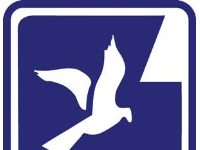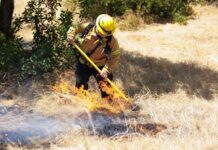
Better heat up that turkey a few more degrees.
It looks like chilly conditions, along with a chance that rain
will make roads even more hazardous, will continue into the long
Thanksgiving weekend.
The current cold weather is an effect of an arctic air mass that
has moved over the country, causing a cold snap across most of the
West, said Diana Henderson, forecaster for the National Weather
Service out of Monterey.
Better heat up that turkey a few more degrees.
It looks like chilly conditions, along with a chance that rain will make roads even more hazardous, will continue into the long Thanksgiving weekend.
The current cold weather is an effect of an arctic air mass that has moved over the country, causing a cold snap across most of the West, said Diana Henderson, forecaster for the National Weather Service out of Monterey.
“It’s not really colder than average,” Henderson said.
The average low for November in Hollister is 40 degrees, she said.
“In Hollister this month, the average low is 39 degrees,” she said, “only a degree lower than the average mean.”
The average daytime high for Hollister is 68 degrees and this month the average is five degrees lower at 63 degrees, she said.
For the next week, at least, it will continue being in the 60s during the day and into the mid to upper 30s at night.
“We’ll continue the cold binge that we’ve been on,” she said.
With a 40-percent chance of rain Saturday, if it does rain, it will probably be in the afternoon and less than a quarter of an inch, Henderson said.
For the heavily traveled holiday weekend, there are some basic precautions every driver should be aware of concerning winter weather and the road.
“First and foremost, when it rains give more time and space to the car in front of you,” said California Highway Patrol Officer Terry Mayes. “It’s the one thing that will get you every time.”
Before driving, check windshield wipers, brake lights, the defroster and that the tires of the car are properly inflated because under-inflated tires contribute to hydroplaning, Mayes said.
If caught in a traffic jam and the car is idling for long periods of time, it’s important to crack a window to avoid any kind of carbon monoxide inhalation.
“If you’re not sure that you have a leak-proof system, you’ll never smell it,” she said. “Leave a small crack so you get a constant influx of air.”
Making sure the gas tank is full and checking headlights are some other basics not to be forgotten.
If there is heavy fog, make sure you don’t out-drive your sight distance, Mayes said.
“Just wait until the fog lifts,” she said. “You don’t get a second chance when your front bumper is in someone else’s rear end.”







